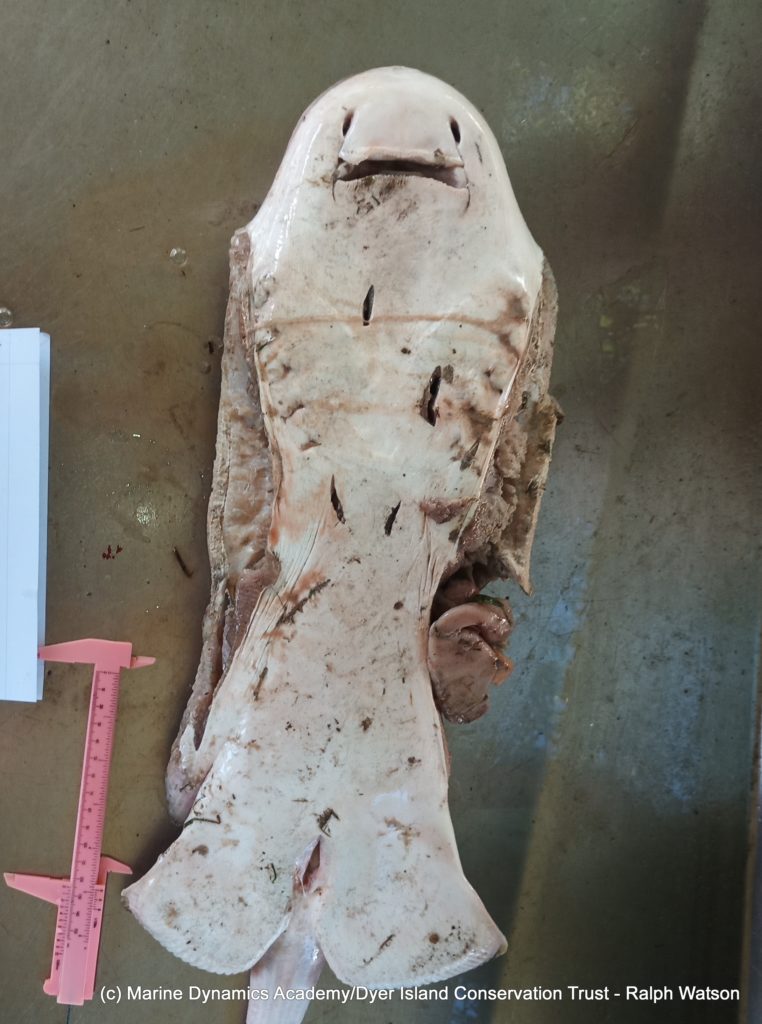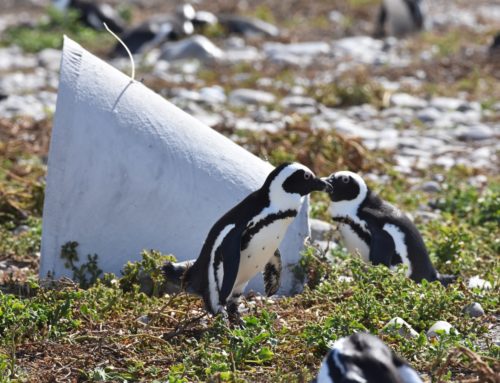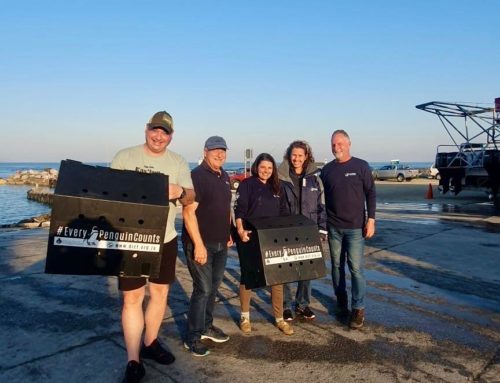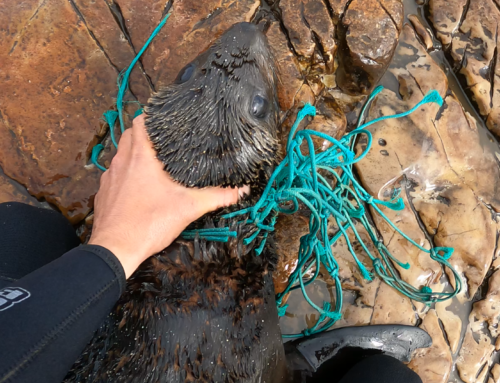On Monday the 21st of June, marine biologist Alison Towner of the Dyer Island Conservation Trust’s (DICT found an Eagle Ray (Myliobatis aquila) on Franskraal beach, Gansbaai, South Africa. The ray was notable as it had multiple stab wounds in its body, and was missing both its pectoral fins (wings).
Later in the week a necropsy was performed under the guidance of DICT marine biologist Ralph Watson, and interns from Marine Dynamics Academy. While it was still inconclusive whether it was caught through fishing (no hook marks were present at the mouth or inside the oesophagus, while the stomach was already damaged prior to examination), closer examination of the wounds indicated that the wings were removed with a knife.
Generally the age of rays are correlated to their size, which is measured from wing-tip to wing-tip. However, as the wings of this animal were removed, determining the age was not possible. However, examination of the internal organs, especially the reproductive tract, indicated it was a mature female. Eagle rays can grow to about 25kg and are known to live for over 20 years.
Rays suffer from the same “persecution” as sharks, whereby their fins are removed for use in shark fin soup. In multiple cases this has resulted in severely impacted ray populations, and some ray families are considered more threatened than sharks. CEO of Marine Dynamics and founder of the Dyer Island Conservation Trust said, “The practice of fin removal from rays is horrific and a big concern. Authorities need to monitor and stop this before it becomes more widespread along our coastline.”
 Deceased eagle ray with fins removed
Deceased eagle ray with fins removed
 Ralph Watson and Marine Dynamics Academy interns
Ralph Watson and Marine Dynamics Academy interns





